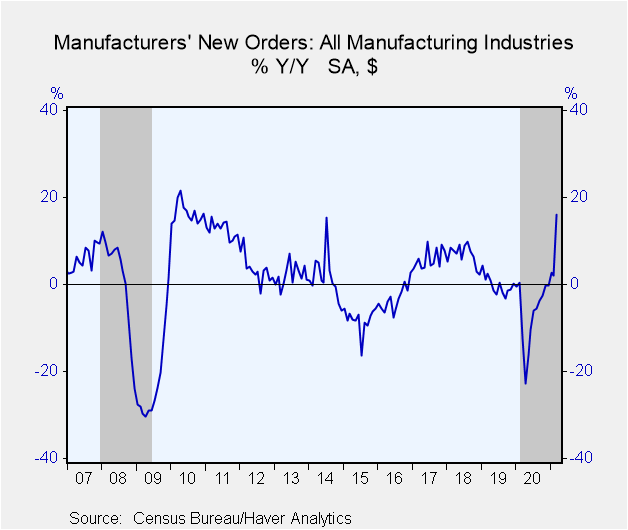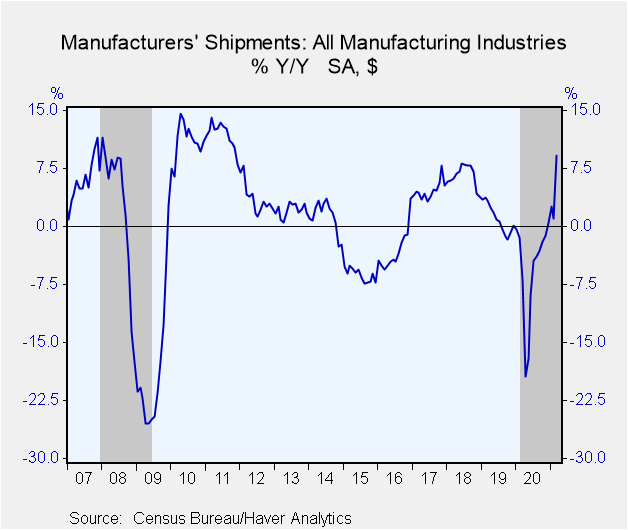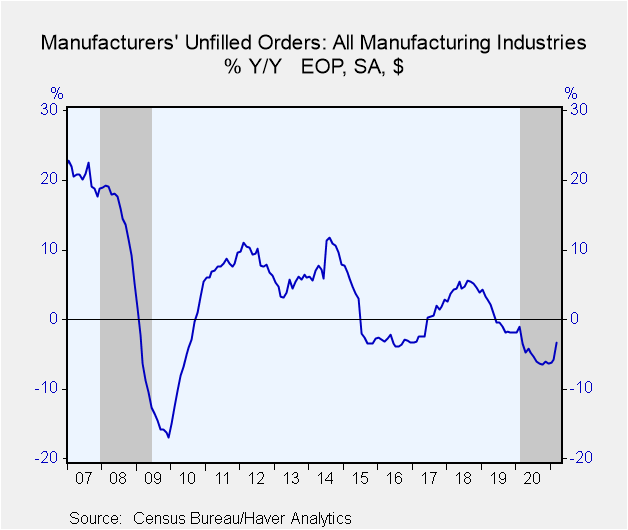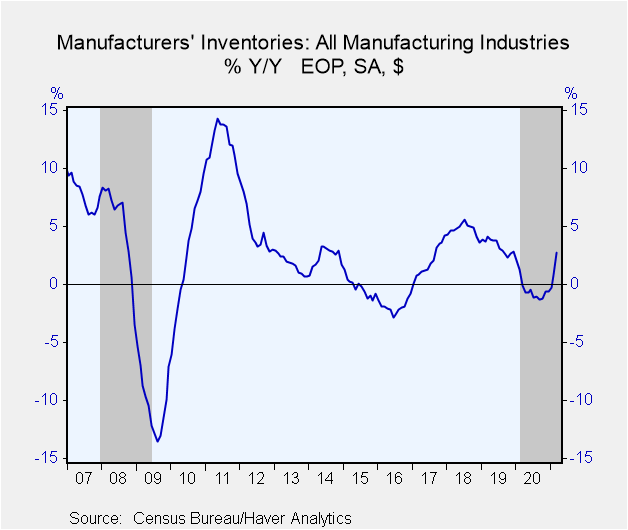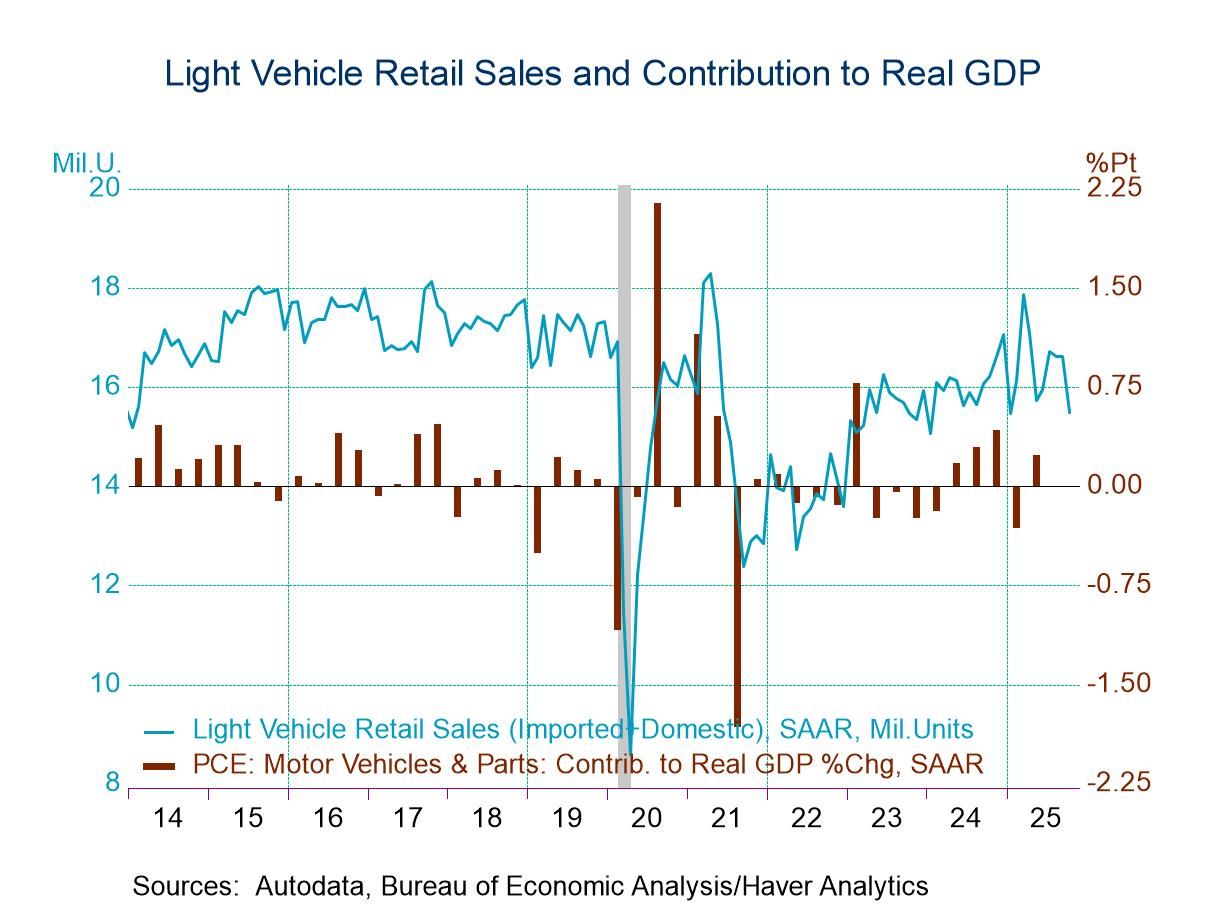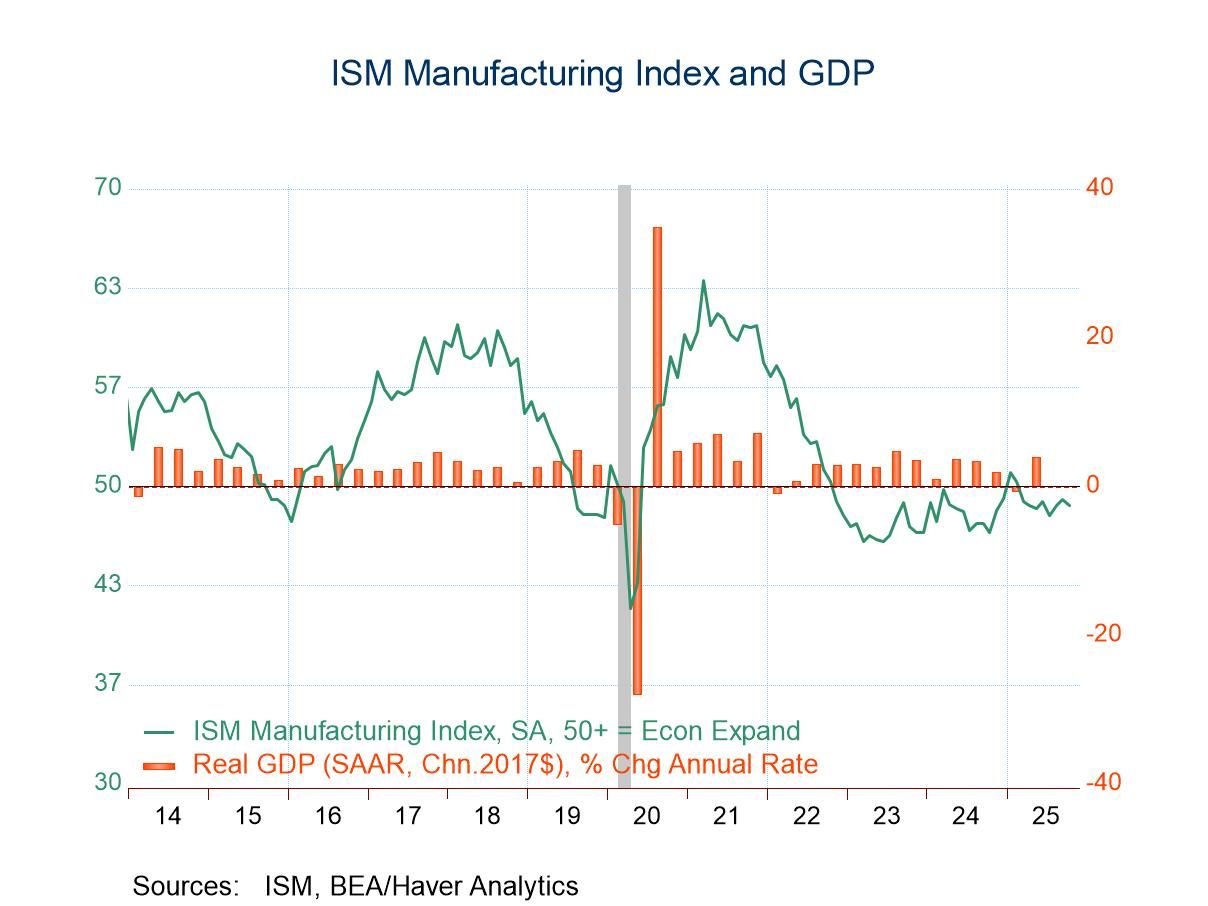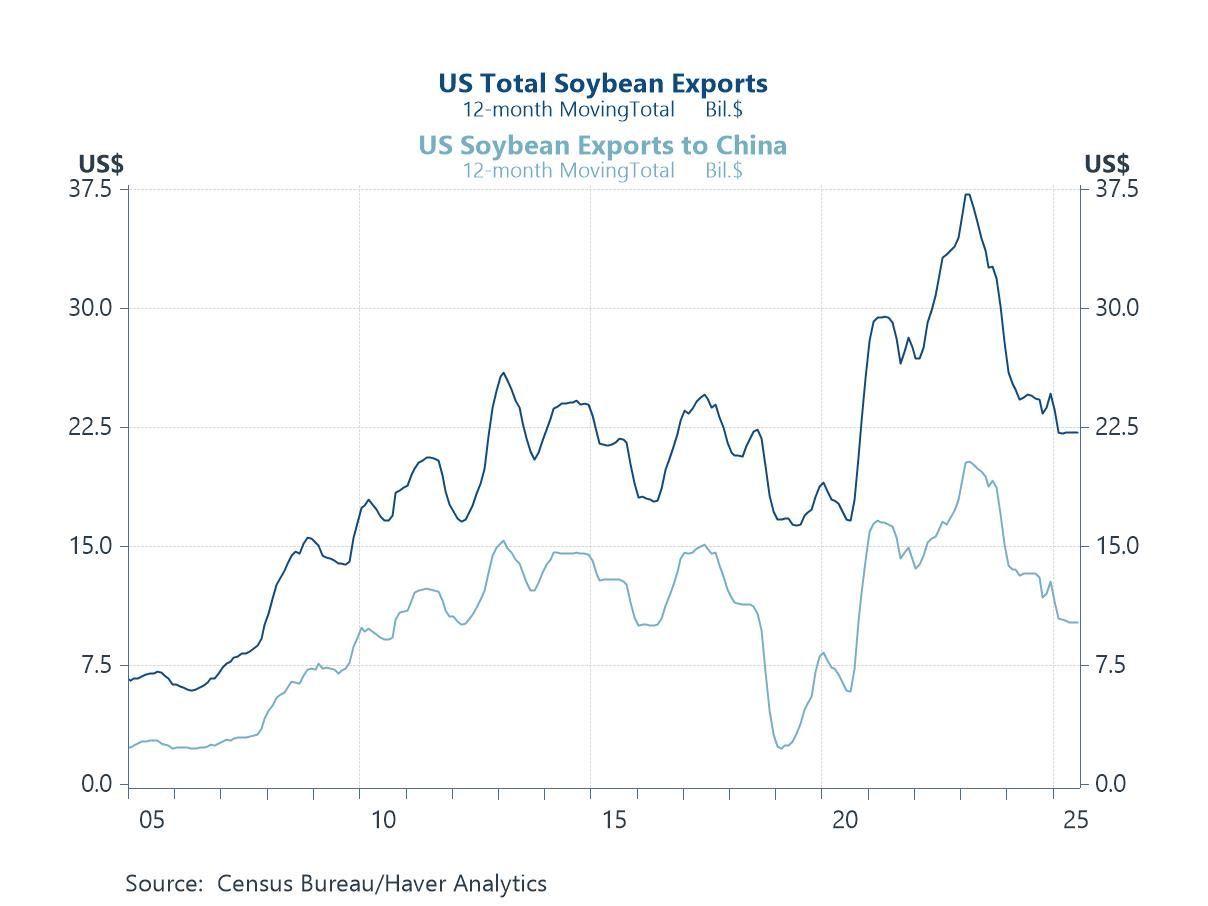 Global| May 04 2021
Global| May 04 2021U.S. Factory Orders & Shipments Rebound in March
by:Tom Moeller
|in:Economy in Brief
Summary
• Factory order gains are broad-based. • Shipments reverse sharp February decline. • Order backlogs & inventories continue to move up. New orders for manufactured goods increased 1.1% in March (16.1% y/y) after February's 0.5% easing. [...]
• Factory order gains are broad-based.
• Shipments reverse sharp February decline.
• Order backlogs & inventories continue to move up.
New orders for manufactured goods increased 1.1% in March (16.1% y/y) after February's 0.5% easing. The Action Economics Forecast Survey expected a 1.2% gain.
Orders in durable goods industries rose 0.8% (25.3% y/y) in March, revised from 0.5% in the advance report. Transportation sector orders declined 1.6% (+62.6% y/y) after falling 2.0% in February. Electrical equipment orders fell 1.2% (+7.9% y/y) ) but machinery orders rose 1.5% (10.2% y/y). The full report on March durable goods activity is available here.
Nondurable goods orders, which equal shipments, increased 1.5% in March (8.1% y/y) after easing 0.1% in February (revised from 0.4% in last month's report). Shipments from petroleum refineries strengthened 4.2% (41.8% y/y) following February's 2.8% rise. Among other nondurable goods sectors, basic chemical shipments improved 0.1% (4.6% y/y) while paper product shipments rose 0.7% (6.4% y/y). Textile mill shipments improved 2.5% (4.5% y/y) while apparel shipments improved 2.2% (4.6% y/y).
Shipments of durable goods rose 2.8% in March (10.3% y/y) and reversed February's decline. Transportation shipments surged 4.9% (11.9% y/y) but shipments of computers & electronic products improved just 0.3% (9.5% y/y) after falling 0.6% in February. Shipments of machinery increased 1.9% (7.2% y/y).
Inventories of manufactured products rose 0.7% in March (2.7% y/y) after a 0.8% February increase. Durable goods inventories increased 1.0% (1.7% y/y). Transportation equipment inventories rose 1.4% (4.5% y/y), while excluding transportation, inventories gained 0.6% (2.3% y/y). Auto inventories strengthened 4.1% (11.7% y/y). Nondurable goods inventories rose 0.3% (4.3% y/y) as petroleum refinery inventories gained 3.0% (32.4% y/y). Textile mill inventories increased 1.0% (-2.8% y/y), while food product inventories rose just 0.1% (1.3% y/y) for a second straight month.
The value of unfilled orders increased 0.4% (-3.3% y/y) following a 0.9% rise. Unfilled orders in the transportation sector were unchanged (-8.3% y/y) and excluding transportation, backlogs jumped 1.3% (7.8% y/y). Computer and electronic product order backlogs rose 0.2% (2.0% y/y) for a second straight month. Electrical equipment & appliances backlogs rose 1.2% (14.3% y/y) while machinery backlogs rose 1.1% (7.7% y/y).
The factory sector data are available in USECON database.
| Factory Sector (% chg) - NAICS Classification | Mar | Feb | Jan | Mar Y/Y | 2020 | 2019 | 2018 |
|---|---|---|---|---|---|---|---|
| New Orders | 1.1 | -0.5 | 2.7 | 16.1 | -6.7 | -0.1 | 6.8 |
| Shipments | 2.1 | -1.9 | 1.8 | 9.2 | -5.7 | 1.0 | 6.6 |
| Unfilled Orders | 0.4 | 0.9 | 0.2 | -3.3 | -6.4 | -1.8 | 3.9 |
| Inventories | 0.7 | 0.8 | 0.2 | 2.7 | -0.6 | 2.8 | 3.6 |
Tom Moeller
AuthorMore in Author Profile »Prior to joining Haver Analytics in 2000, Mr. Moeller worked as the Economist at Chancellor Capital Management from 1985 to 1999. There, he developed comprehensive economic forecasts and interpreted economic data for equity and fixed income portfolio managers. Also at Chancellor, Mr. Moeller worked as an equity analyst and was responsible for researching and rating companies in the economically sensitive automobile and housing industries for investment in Chancellor’s equity portfolio. Prior to joining Chancellor, Mr. Moeller was an Economist at Citibank from 1979 to 1984. He also analyzed pricing behavior in the metals industry for the Council on Wage and Price Stability in Washington, D.C. In 1999, Mr. Moeller received the award for most accurate forecast from the Forecasters' Club of New York. From 1990 to 1992 he was President of the New York Association for Business Economists. Mr. Moeller earned an M.B.A. in Finance from Fordham University, where he graduated in 1987. He holds a Bachelor of Arts in Economics from George Washington University.


